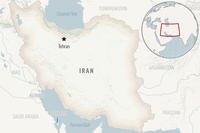 Honeywell is working with the Army to have helicopters transmit more data faster through a helicopter's rotor wash allowing pilots to send videos faster and better communicate with headquarters.
Honeywell is working with the Army to have helicopters transmit more data faster through a helicopter's rotor wash allowing pilots to send videos faster and better communicate with headquarters.
Army leaders keep asking more from their helicopter pilots to include having some control nearby drones. Ground commanders are also turning most helicopters into intelligence collection aircraft by mounting a wide array of sensors on board.
The rotor wash above the helicopter makes it tougher to transmit data to satellites. Honeywell has since worked with the Army to develop a host of systems to improve the data transmit rate, which the company displayed at the 2014 Association of the U.S. Army's annual conference this week.
Army leaders want to bring ground commanders closer to combat and will depend on increases data rates from helicopters to set up these airborne headquarters units.
Engineers also had to keep in mind those extra sensors mean the helicopters get heavier and the their data transmission suites must get lighter, said Tim Roberts, an officials with Honeywell Aerospace.
Honeywell has been installing Aspire 200 satellite communication systems on board undisclosed Army helicopters to speed up their data transfer rate. The Aspire 200 replaced Honeywell eNfusion HSD-400 high speed data transceivers. The Aspire weights 15 pounds lighter than the eNfusion.
In September, Honeywell also unveiled its newest intermediate gain phased-array antenna, the Aspire AMT-1800 IGA the Army is mounting to its Army helicopter fleet.








